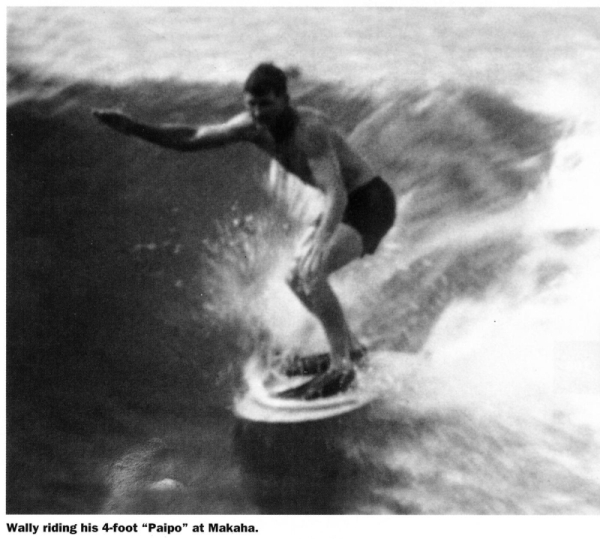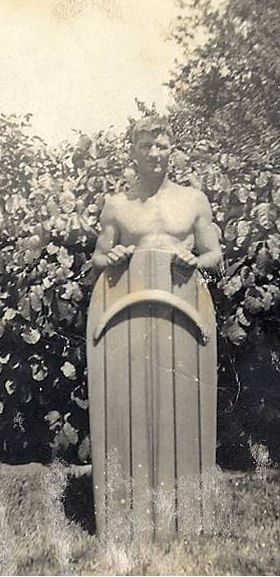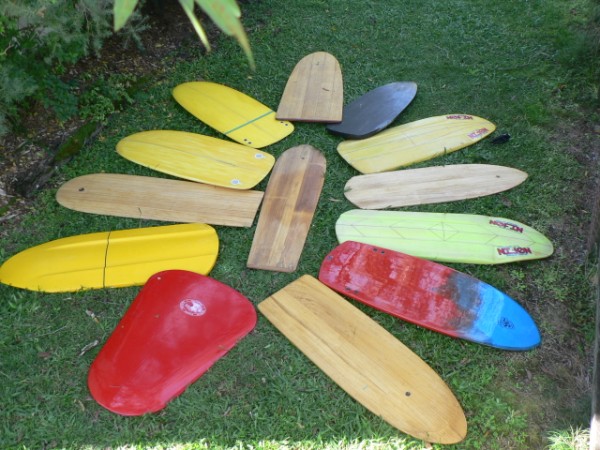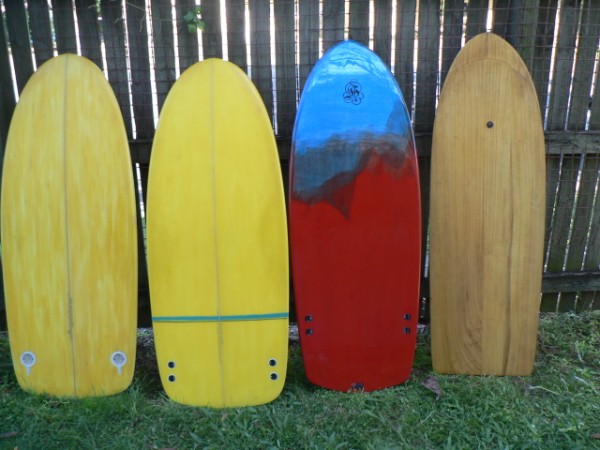Malaroo, you start your reply using the “quote” button. To do several Q&A sections you will want to copy the two quote anchors, the open quote that you copy/paste at the beginning and at the end paste a close quote. For example, see the pic below:
Malaroo, you start your reply using the “quote” button. To do several Q&A sections you will want to copy the two quote anchors, the open quote that you copy/paste at the beginning and at the end paste a close quote. For example, see the pic below:
Luggage bags vary in size – one can also have one made very reasonably that looks like a regular luggage bag but is in fact carrying a board. Cloak and dagger stuff so you are not charged a “surf board fee.”
The rules vary now for boogie boards. The airlines are increasingly enforcing a linear length rule of 62 inches for any luggage. For example, the measuring stick wielding American Airlines check-in counter are measuring any and all bags that they think might exceed 62 linear inches. Linear inches is the sum of length x width x thickness. Unless there is a specific exemption in the “Contract of Carriage” as is often the case for golf equipment. Exceeding the 62 inch rule can mean a $200 fee each way. A surfboard fee is around $175 each way. So, a boogie board easily exceeds the fee-focused airlines 62 inch rule (a boogie board is roughly 42x22x3 without a protective bag).
With a board bag my 50x20x2.5 paipo translates roughly to a bag measuring 54x22x4, or 80 inches, which happens to be another elbow in some airlines’ linear inches rules. Ultimately, the quest for a paipo bisect would apply to kneeboarders as well.
No and not for me!
Yes. It is possible that an EPS/Epoxy board would be the way to go. I don’t know enough about all of these technologies to know. But, a couple of extra board pounds for me is not a factor.
Ok, becoming very clear, and we (anyone working on this) need to be clear so as not to go down the wrong track … and very important to know without doubt that it is not the wrong track.
What will happen now is that the curious readers will obsess over this and someone one day will wake up with an answer. I hope they sign in and let us all know. Your more likely to be contacted directly.
One more question that needs clarifying. The linear inches thing!
50x20=1000x2.5=2500?
Got the answer from the horses mouth … .see pic below
The NEXT question that needs to be answered is
If you sliced up an Austin paipo, would it fit into that sized bag ? (specified below)
rodntube, can you just slice up your favourite board and shuv the bits into a bag for us?
Seriously, Can anyone work out the cubic inches of an Austin paipo and post it on this thread. (with calculation method)
Linear inches = L(enght) + W(idth) + H(eight), commonly expressed in airline lingo as LxWxH, where “x” is the same as “by” whereby 50(L)x20(W)x2(H) = 72 inches, but also need to add a couple inches in each dimension at least for padding and basics such as a wetsuit, towel, rash guards…
sorry if this is ? a bit of a tangent ?
I realise this thread IS called "....paipos / PRONE boards "
..... but .....
I'm just wondering ...
apart from 'proneman' Roger ,
how many of you are able to stand up surf your paipos ?
...and ... if so ....
what are the minimum dimensions you have found to be able to do this efficiently / ? relatively effortlessly , for you personally ?
I ask , because I recall seeing "fair sized kids" , in one of the old 1970s movies I have [? five summer stories ? going surfing ?] standing up on paipos and having a grand old time ...it sure looked FUN to me !!
cheers !
ben
For me the board ceases to be a “paipo board” and becomes a “short board” (or a very short board) when a person uses it for foot surfing. By inherent definition a paipo board is a board intended to be ridden kipapa-style, or prone.
John Clark’s recently published book, Hawaiian surfing: traditions from the past, he writes:
In the earliest descriptions of surfboards by Hawaiian scholars, the smallest boards, those that were shorter than six feet in length, were generically called papa li`ili`i, or "small boards." During the early 1900s, the name papa li`ili`i was changed on two fronts with non-Hawaiian surfers calling them bellyboards, because they were most often ridden prone, the rider laying on his or her "belly," and with Hawaiian surfers in Waikiki calling them pae po`o boards.
<em>Pae po`o</em> is an
interesting word. It does not appear in any Hawaiian
dictionaries, Hawaiian language newspapers, or writings of the
prominent Hawaiian scholars of the 1800s, such as Ii, Kamakau,
Kepelino, and Malo, who described traditional Hawaiian surf sports. The
term appears to have been coined by Hawaiian surfers in Waikiki circa
1900, where it was commonly used to mean bodysurfing or bodysurfing
with a small wooden bodyboard. The literal translation of pae poo</em> is "ride [a wave] head-first", or in other words, bodysurf, and a <em>papa pae poo was a bodysurfing board, or what surfers today call a
bodyboard.
Continuing from Clark’s book, this is where the interpretation gets twisted around a bit,
The popular spelling used today, paipo, was coined by Hawaiian surfing legend Wally Froiseth, who, besides being an excellent surfer, was an exceptional paipo board rider who was famous for standing on his twin-fin board while riding big waves.
Wally Froiseth was simply a short board innovator back in the 1950s and that is what a really short board was called.
...thanks for that , interesting info !
any idea HOW short wally's twin fin WAS , please ?
cheers !
ben


This may help answer your question Ben.
More info about Wally Froiseth’s paipo here:
http://mypaipoboards.org/interviews/RobertMoynier/RobertMoynier_2010-0705.shtml
Upper part of the page here: http://mypaipoboards.org/
Most of the references on the MyPaipoBoards site should show up from this internal website search: http://www.google.com/cse?cx=001700233832879414874%3A52lountvlki&ie=UTF-8&q=wally&sa=Search&siteurl=www-open-opensocial.googleusercontent.com%2Fgadgets%2Fifr%3Furl%3Dhttp%253A%252F%252Fwww.google.com%252Fcse%252Fapi%252F001700233832879414874%252Fcse%252F52lountvlki%252Fgadget%26container%3Dopen%26view%3Dhome%26lang%3Dall%26country%3DALL%26debug%3D0&ref=mypaipoboards.org%2F#gsc.tab=0&gsc.q=wally&gsc.page=1
Standing up on a paipo - here goes
This interview with Jack McCoy has some photos (scroll down the page) of Val Ching standing up & his board.
http://mypaipoboards.org/interviews/JackMcCoy/JackMcCoy_2011-0411.shtml
More on Val Ching here:
http://mypaipoboards.org/mags/magazines.shtml
Pendarvis, Cher. (2010, Winter). Uncle Val. Paipo in practice. The living link to surfing's high-performance roots. The Surfer’s Journal, 19(6), 38-47.
Article on Wally Froiseth:
Gault-Williams, Malcolm. (1997, Winter). Surf Drunk: Wally Froiseth. The Surfer’s Journal, 6(4), 105.
David Rastovich standing up on a paipo/ bellyboard ( a Vic Tantau Belloomer) & a short creation
Smith, Bob (Boardroom Bob). (2010, November/December). Bellyboards, Paipo Nuis & Belloomers: The history and resurgence of an ancient craft. Australian Longboarding Magazine, 72, 50-52
Doherty, Sean. (2012, February). Board Design. Outside the square: Look mum, they fibreglassed a boogieboard! Surfing World, 322, p. 101.
Derek Hynd rides really short boards as well. Can't remember where i saw this.
Bob
Top photo is the latest addition to the paipo family - courtesy of Huie (it is as yet as yet unsurfed). Below, are the boards related to the Larry Goddard branch of the family, and last, is the extended paipo family.
Bob


Bob, I see a lot of boards with rounded tails, wide point forward, flat rocker and wide noses, is that the best features of a paipo or just the way you like them?
Clint,
Maybe its the angle I took them. Most of my fibreglass boards have relatively parallel rails. the blue/red board has the wider point further forward than usual for me. The Goddard boards have a more rounded square tail.
See larry's design sheets: http://mypaipoboards.org/interviews/LarryGoddard/Designs/thumb.shtml
The tail area is what is mostly in the water - hence is where the planing comes from.
Bob
Clint
My experience of a wide square tailed board is that when getting barrelled the trail lifts and tilts the board and aims it more into the wave, you really need to play with that to make a barrell, kind of surf tilted and sideways, good fun, fantastic feeling. Whereas a board with a rounded pin will sit right in the suck zone, without tipping, tends to shoot forward instead. Its a totally different experience in the tube. Don’t know which one I like the best, playing with a falling lip is good on any board.
bgreen
What a collection and that historical info … that must have taken years to collect!
Question : Ride report on the red board, (not the new unridden one) thats a Paul Lindbergh isn’t it?
rodntube
I just went to the local hardware store and got a box 22+14+9 and todays mission is to copy an Austin board on cardboard and see what is needed to get it in the box. Will post pics in a few hours I hope.
Chippy
I seriously wonder how short we would ride if we didn’t have to consider paddling and catching? Toe in boards, small and short. If there was a flipper system where the flippers didn’t effect you standing on a board, (I imagine booties with flippers on top of the foot, going more outwards rather than on the inside of the feet) that might have us old fat bastards standing on 5’ + a bit boards. I can only ride short boards on sucky point breaks, and they are so much more fun than a longer board.
Unclegrumpy
All this stuff about getting a board into an airline bag, I’m guessing, but I can hear you saying,
“Fly to the bloody beach, walk the beach and surrounds, see what you find, maybe go the local hardware, buy some cheap hand tools, make something that surfs and enjoy yourself.”
John,
Yes, the board is one of Paul Lindbergh's, HPD boards. My general comment is that I don't feel I have untapped the potential of this board. It's no surprise that the guys who pioneered the design (e.g John Waidelich & Jim Growney) liked Sunset Beach. A peak to launch from gets these boards flying. A weak lined point wave etc just doesn't. Because of the neutral bouyancy, you need some surf fitness.In a strong current they are hard work, however, a dream to duck dive and a lot of fun gliding underwater.
Like many prone craft they require you to put in time to understand the intricacies. Pick the right conditions and you can have a lot of fun. In the nearish future, there should be some interviews on Rod's paipo site, with guys from NZ who rode these boards in the 60s.
Sean Ross, is probably the best known rider of this style of board, riding Pipeline for many years. There is a paipo interview with him, as well as with Jim Growney and Rainer Stegeman who rode one in the 60s. Harry Akisada & Stan Osserman from Hawaii are guys who still ride boards which are variants of this desigm.
Bob
Chippy,
John is right, I do ride a somewhat longer board . My current board is 0.75% my height. At it's widest it is 21.38" - with a length of 53.75" there is a L/W ratio of 0.397 (53.75 / 21.38). This board has a very slight concave on an otherwise flat bottom. See http://mypaipoboards.org/interviews/LarryGoddard/Designs/thumb.shtml drawing 21bds to get an idea of the profile. I have gone much thinner.
Another favourite board is concave bottomed but with channels. See - http://mypaipoboards.org/interviews/JohnGalera/JG_2009-0922.shtml
As John said, anything goes. You do need nose lift, but the wood boards are pretty much dead flat, but can have some flex.
Bob
Considering slicing options
a) Needs six pieces if middle silced down stringer line
Then the question is for each side
b) 3 even length peices?
c) 2 pieces 1/2" less box length, 1 smaller piece?
d)Smaller piece in middle or one end?
e) Which end?
f) Should pieces all be same left and right (match at joins) or different for better strength (not match at joins)
g) Would some other slice method be better? (not down the stringer line)
h) Is there any other option for a fiberglass construction?
Your opinions who ever you are will be appreciated.
Too many pieces! Much too complex a task. The object isn’t to make this a carry-on project, but as a regular check-in bag in a suitcase some like 28x24x9
Well that’s a releif, I’ll get a bigger box.